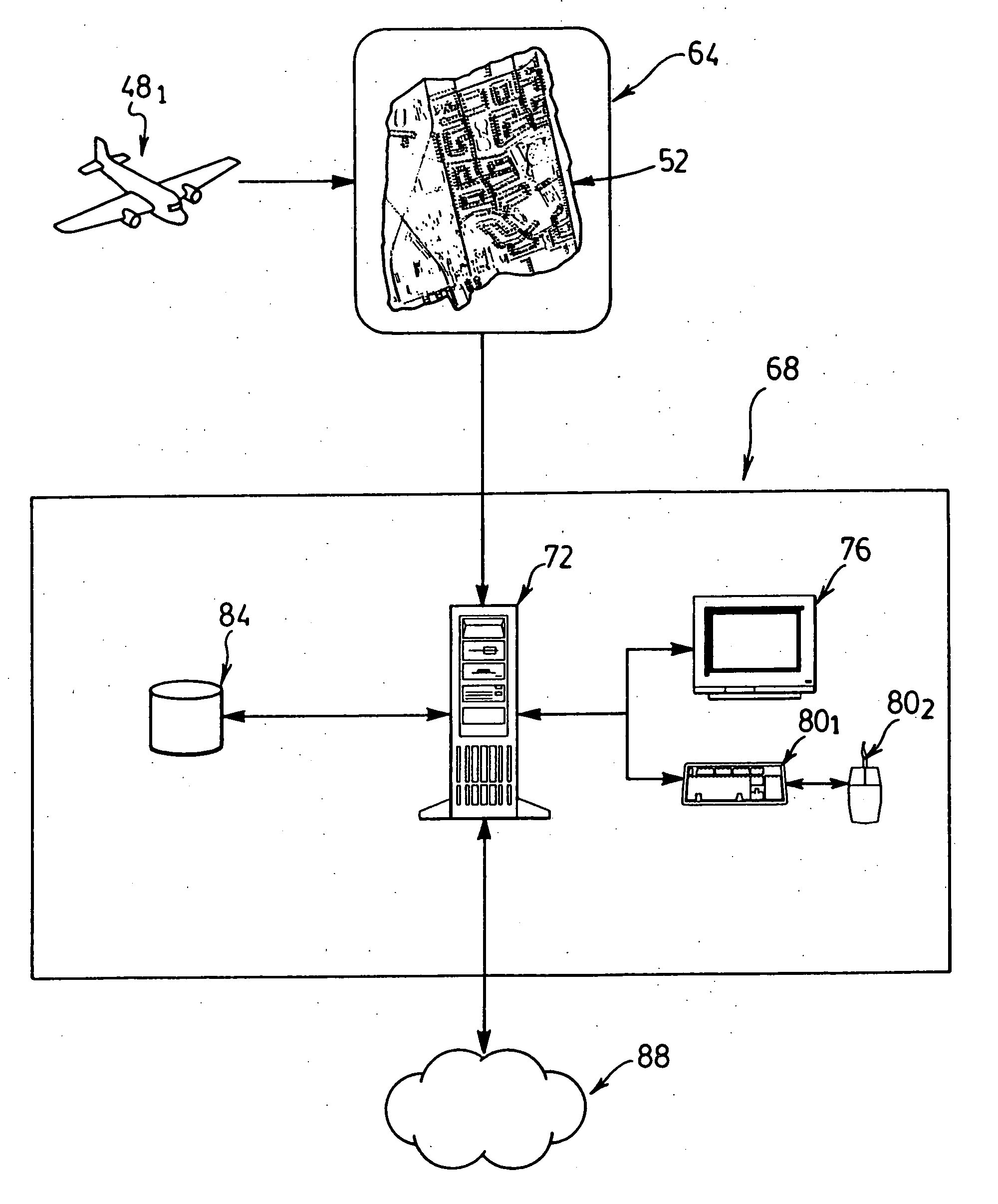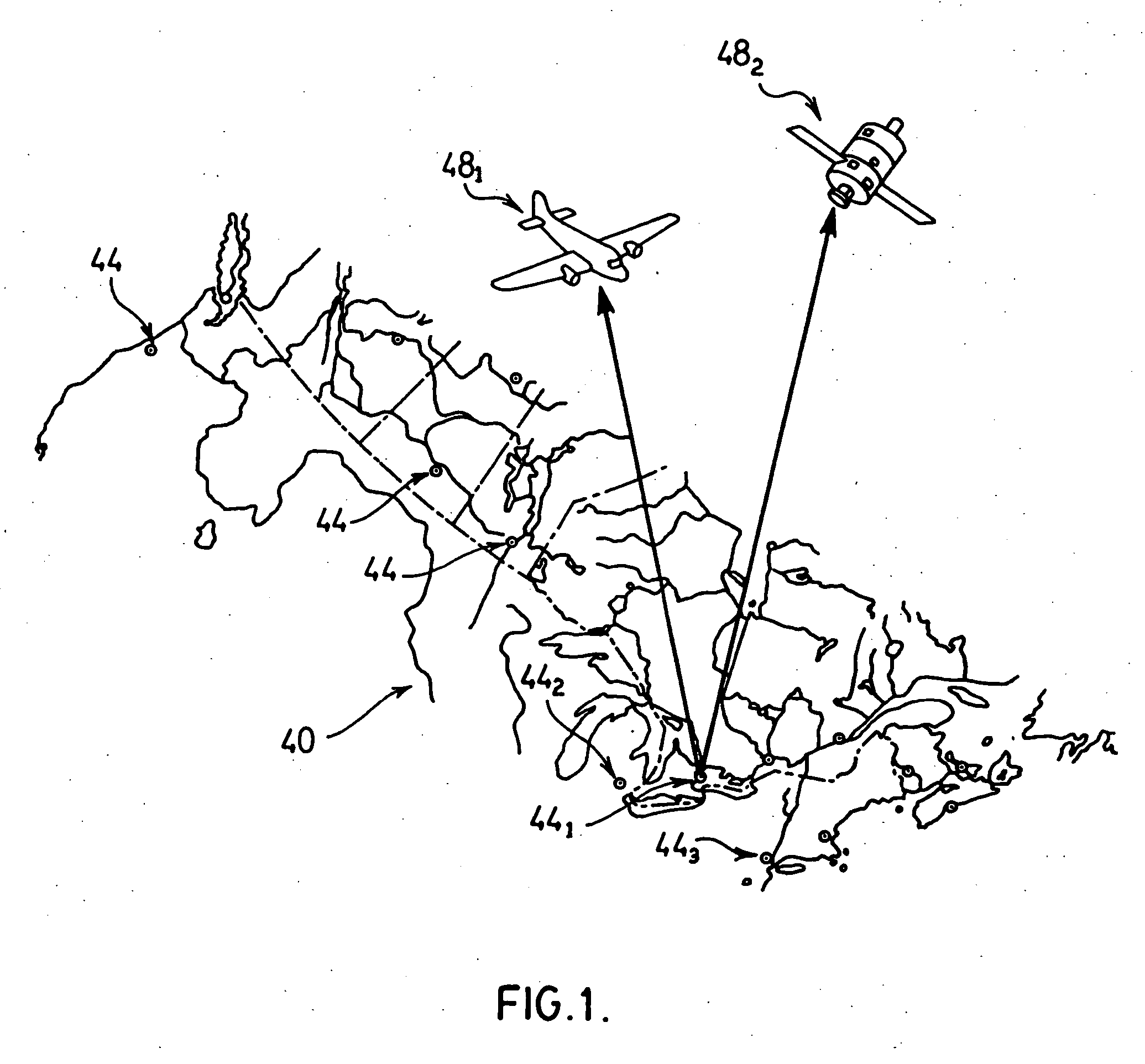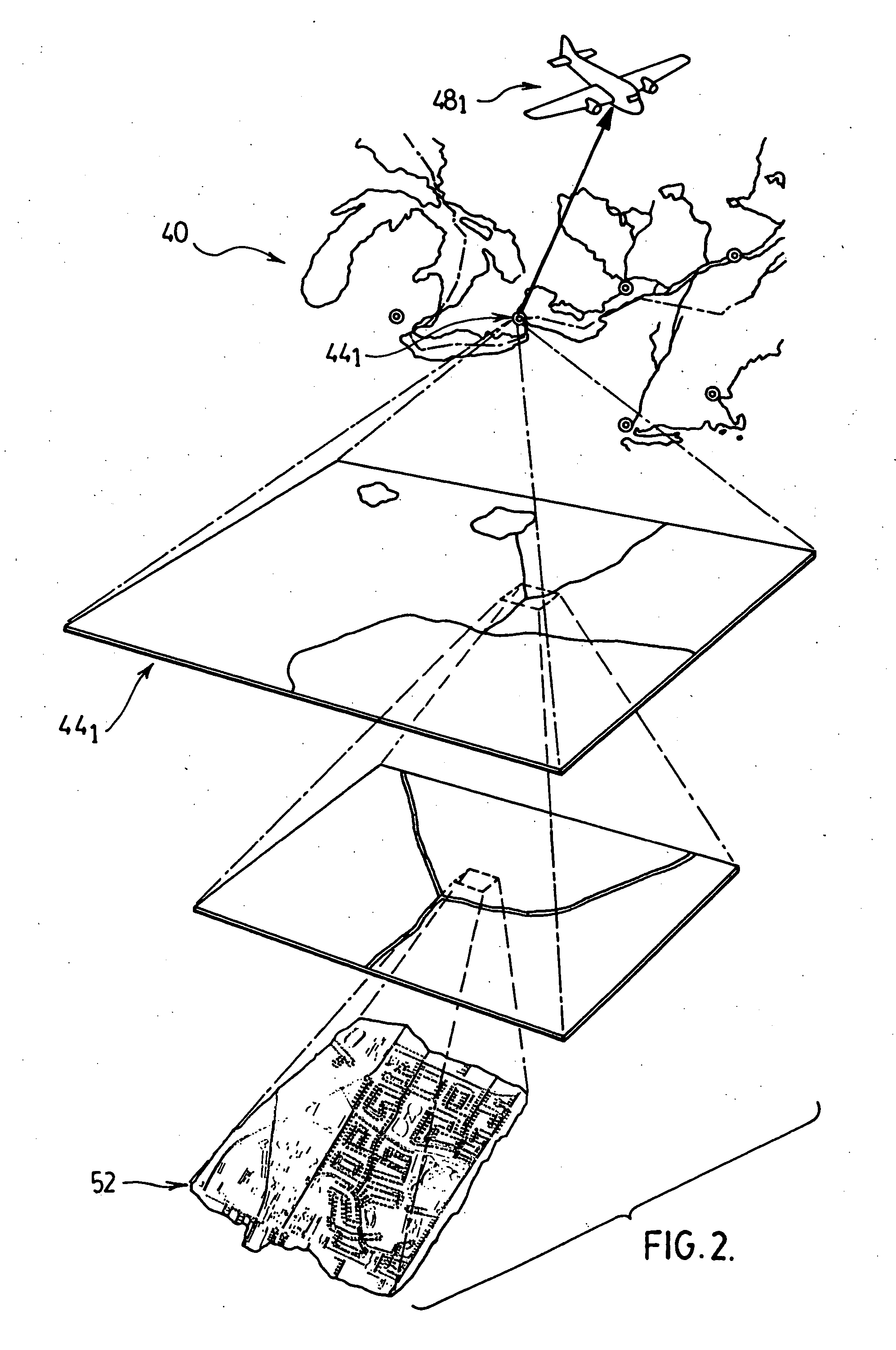System, apparatus and method for mapping
a mapping system and map technology, applied in the field of cartography, can solve the problems of low density of built-up population and human activity, high land consumption, and inability to sustain mass transportation
- Summary
- Abstract
- Description
- Claims
- Application Information
AI Technical Summary
Benefits of technology
Problems solved by technology
Method used
Image
Examples
Embodiment Construction
[0038]FIG. 1 shows a territory 40 containing a plurality of urban regions 44. In the example in FIG. 1, territory 40 is a section of North America roughly bisected by the US-Canada border, but it is to be understood that this is merely an example of a territory to which the teachings herein can apply. Thus, the urban regions 44 in territory 40 include various well-known urban regions, including Toronto, indicated at 441, Detroit indicated at 442, and New York at 443—other areas are simply indicated by the reference 44. It should be understood that, in a present embodiment, area 44 is not intended in its political sense, but rather to indicate urban regions in a geographic sense. Thus, an area like Toronto 441 refers to the Greater Toronto Area, or the entire “Golden Horseshoe”, spanning the municipalities from Hamilton to Bowmanville along the north shore of Lake Ontario. In like fashion, Detroit 442, and New York 443 refer to their respective greater metropolitan areas.
[0039]FIG. ...
PUM
 Login to View More
Login to View More Abstract
Description
Claims
Application Information
 Login to View More
Login to View More - R&D
- Intellectual Property
- Life Sciences
- Materials
- Tech Scout
- Unparalleled Data Quality
- Higher Quality Content
- 60% Fewer Hallucinations
Browse by: Latest US Patents, China's latest patents, Technical Efficacy Thesaurus, Application Domain, Technology Topic, Popular Technical Reports.
© 2025 PatSnap. All rights reserved.Legal|Privacy policy|Modern Slavery Act Transparency Statement|Sitemap|About US| Contact US: help@patsnap.com



